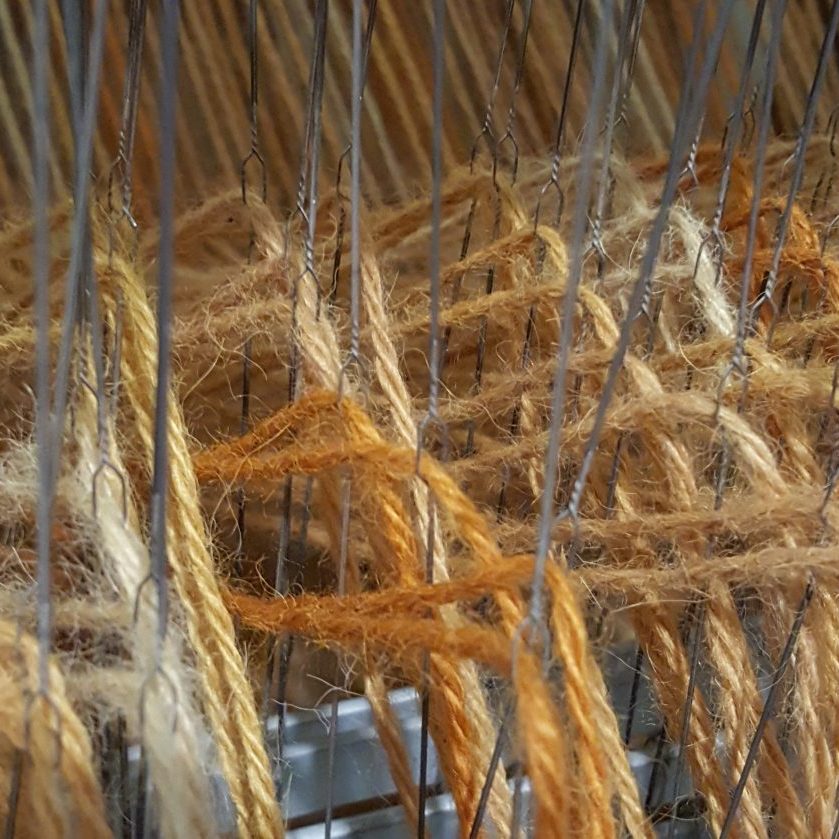I choose wine by the quality (together with the price), but when the bottle comes in an organza bag, that’s an added bonus. I now have a sizeable collection and there’s always at least one hanging on the washing line at any time of the year. In summer there can be  a good half-dozen.
a good half-dozen.
Leaves are generally tied in a bundle to hang off the laundry door for a week or so, but when flowers are plucked one or a small handful at a time, they go into the wine bags (gift bags, not goon bags) on the back wire of the clothes line where they get shade 24/7. This also goes for tagetes heads which would otherwise shed hundreds of seeds over the floor.
I originally spread some wire fencing over the “rafters” in the shed, placed flyscreen wire on top and spread dahlia flowers over that to dry. Now I find that if there are not too many in one go , they too can go into a wine bag. This is only practical in summer, where they can dry within a day; in winter the tree dahlia heads go mouldy when piled into a bag.
, they too can go into a wine bag. This is only practical in summer, where they can dry within a day; in winter the tree dahlia heads go mouldy when piled into a bag.
And avocado pits? When a colleague donates them on a daily basis, they stay on my desk shelf at work and dry well without going mouldy. Easy! At home they get put into a bag along with the skins – after going over both with a nail brush to get rid of any remaining flesh.
On the right: half-a-year’s harvest of lemon myrtle from the 50cm-high specimen in a pot. I remember buying 100g of these about 18 years ago when they were $50/kg! Although they’re not native to SA, they’re really easy to grow both in pot and in open ground.


 (bicarb) brought out more brown, whereas the acid (vinegar) brought out a redder tone.
(bicarb) brought out more brown, whereas the acid (vinegar) brought out a redder tone. s a smaller bunch growing near my local station, so a-harvesting I went.
s a smaller bunch growing near my local station, so a-harvesting I went. The mordanted yarns came up more yellow, or rather a more intense (albeit slight) shade of the same mustardy-yellow. I wonder if the texture of the yarn had anything to do with refraction (the yarn is now at the end of the ball and is a lot more open, like singles rather than plied).
The mordanted yarns came up more yellow, or rather a more intense (albeit slight) shade of the same mustardy-yellow. I wonder if the texture of the yarn had anything to do with refraction (the yarn is now at the end of the ball and is a lot more open, like singles rather than plied).